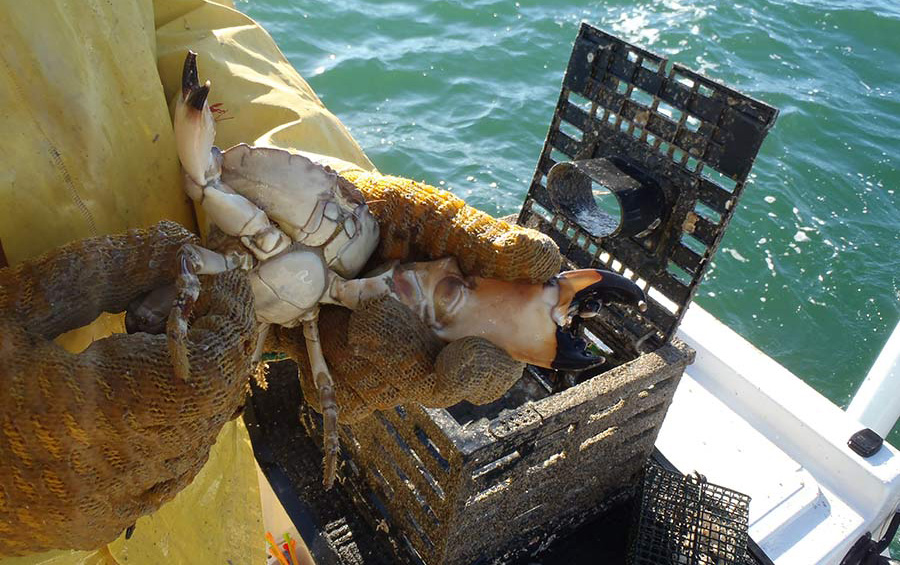Red tide bodes well for next season
It seems the only thing Florida stone crabbers harvested with any consistency during the season that ended May 15 was optimism. And that was often hard work.
The average annual haul since 2011 has been 3.7 million pounds, valued at $27.8 million. The harvest in pounds has climbed the past few years, with catch from October to December traditionally being better than January to May.
But 2018 bucked the recent seasonal trend, yielding just 2.1 million pounds — not much more than the 1.98 million pounds caught in 2013-2014 season that was labeled “historically low” by Florida Fish and Wildlife Commission officials.
Shorter supply resulted in higher dollar value, though. Commission landings data shows an estimated value for all claw sizes this season at $29.6 million.
Price aside, it was hard for some fish houses to meet demand.
“I don’t know if we broke 100,000 pounds this season,” said Tommy Shook, general manager of Frenchy’s Stone Crab Co. in Palm Harbor, Fla. “The year before was 190,000 [pounds sold].”
The independent crabbers he buys from just weren’t able to deliver. “It sure makes it hard when the phones are ringing and there’s nothing to sell,” he said. “Nothing worse than being a crab company with no crabs.”
“Stones were in very short supply in our area last season,” said Katie Fischer of Island Seafood Co. in Matlacha, on Florida’s Southwest Gulf Coast. “Our local crab house couldn’t supply us, so we had to drive to a crab house up in Englewood the whole season.” Island Seafood was paying $28 a pound for jumbo claws and $20 to $25 for large claws at the dock.
The story was even worse for Shelly’s Seafood in Homosassa, Fla. “We’ve been stone crabbing for 35 years. And it was the worst season in 35,” said owner Shelly Smith. Boat prices in her area averaged $23 a pound for jumbo and $15 for large.
Stone crab is among the top four most valuable fisheries in Florida, behind spiny lobster, red grouper and shrimp. The state is responsible for 99 percent of stone crab landings in the United States.
Everybody seems to have a theory about why supply was down this season. Smith believes the two previous years of abundant octopus were partially to blame, since octopus preys on stone crab. Hurricane Irma was a wide storm and seemed to suck the water out of the bays right before the season opened in 2017, too, she said.
Shook said he thinks this year’s serious red algal bloom will mean lots of stone crab next year. He has seen it happen before. “The following year after a (serious) red tide is generally a banner year,” he said.







